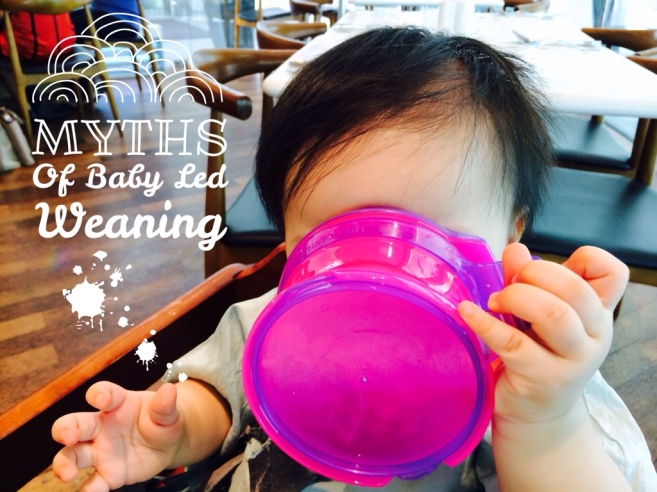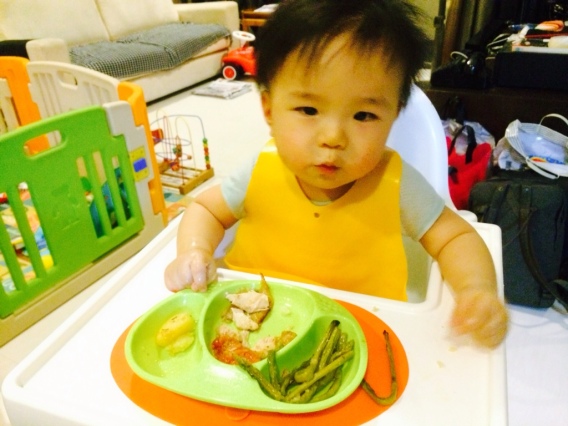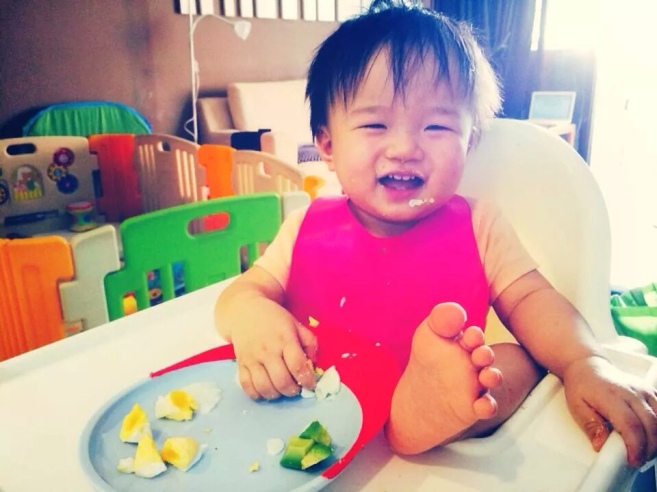Answers, please!
Our entire family has really enjoyed BLW with Lil Pea. But of course there are some days where he wolfs down everything and asks for more – and other days where he doesn't feel like eating so much. Just like any adult, really.
See my other post for an overview of our Baby Led Weaning journey.
Here are some of the common anxieties for parents considering Baby Led Weaning. I will update this list if I think of more!
Baby might choke.
Don't mistake gagging for choking.
In young babies, the gag reflex is very far forward on the tongue (so that baby will spit out food that is too large or goes down too quickly).
When baby is gagging, let him sort it out himself. It's a life skill, like pooping in the toilet and chasing girls. He will get better at it.
What you can do is fight the rising panic and try to look calm, while mentally running the baby Heimlich maneuver in your head. When I first started BLW I was always on the alert for possible choking!
Lil Pea actually choked only once, from being over-enthusiastic about a huge chunk of raw apple at 7 months. I did the baby Heimlich (see below) and it worked. He wasn't afraid, he didn't cry, and went back to the offending apple without missing a best.
Since then, he's learnt and always spat out pieces of food too large to swallow or too difficult to chew. A tip is to steam hard foods lightly to soften them.
See the latest guidelines on choking and infant resuscitation. You can also learn from the videos by Sky News and UK National Health Service on how to help a choking child, and how to perform baby Heimlich.
Parents will need this basic first aid knowledge anyway, as baby becomes more mobile and starts putting things in his mouth.
Alright, back to your gagging baby.
When baby is gagging, he will splutter noisily while trying to spit out the food. When he is actually really choking, you will know – there is almost no sound at all because baby can't breathe, and the face and lips will start turning blue. He will try to cough out the dislodged item.
If you hear gagging noises, baby is fine.
Stay calm, wait a bit, then help him dislodge what's stuck in his airway using the method above.
The idea with BLW is that he will learn to chew, spit and swallow.
The cleaning up will kill you.
Yes, it might. Is this something you're prepared to do?
Anyway, having a baby is a lot of cleaning up, whether you are doing BLW or not.
I spent my mornings cleaning Lil Pea up, changing him into fresh clothes, and cleaning up his high chair, the floor, and the surrounding environment. That's after cooking his breakfast, just before I went to work.
Just like changing diapers 20,000 times a day, you get used to it.
Baby can't digest large pieces of food.
It's true, he has no teeth. But he can gum foods like steamed apples and carrots and even meats. When he's happily gumming food, it means that he's scraping small bits off – so don't sweat it.
Lil Pea never had tummy troubles even when feeding himself strips of meat.
It was just slightly disturbing to see food in huge chunks in his poop, almost the same way they went in. But that was soon resolved as his digestive system matured.
As he grows older, his chewing skills will become better, and his young intestines will also get better at digesting, so don't worry.
Baby will not become a picky eater.
Nothing can guarantee your baby won't become a fussy eater. Babies change all the time. Toddlers, especially, are likely to go through a phase of refusing foods.
What BLW does is that it sets the stage for better eating habits. If meal times are not a battleground but a place of fun and exploration, it makes things easier in future for the baby and the parent.
A study by Dr Ellen Townsend and her colleague suggests that babies on BLW have lower BMI while babies on the weaning style of spoonfeeding have a higher incidence of obesity. But picky eating? Not that much difference.
A more recent study by Sonya Cameron and her colleagues shows that while health professionals are hesitant to recommend BLW, parents have been reporting good experiences with BLW, in this first paper to include interviews with health professionals.
I suppose you can ask me again when Lil Pea goes into the terrible twos when food fussiness kicks in (here are some tips to combat fussy eating), but BLW has been brilliant for us and our entire family had so much fun with Lil Pea.





